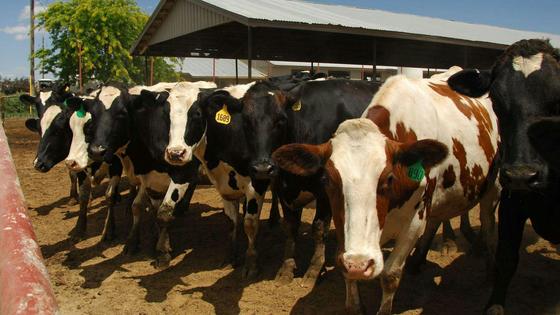Bird flu detected in Colorado dairy cattle − a vet explains the risks of the highly pathogenic avian influenza virus
Published in News & Features
Colorado has highly pathogenic avian influenza – also known as HPAI or bird flu – on a dairy farm, the ninth state with confirmed cases. The U.S. Department of Agriculture’s National Veterinary Services Laboratories confirmed the virus on April 25, 2024, in a herd in northeast Colorado.
This farm is one of 35 dairy farms across the U.S. with verified cases of bird flu in cattle as of May 7, 2024, according to the USDA.
Bird flu is not new to Colorado. The state experienced an outbreak in poultry that began in 2022. Since then, the USDA’s Animal and Plant Health Inspection Service has reported that 6.3 million birds in nine commercial flocks and 25 backyard flocks have been affected by the virus. The most recent detection was in February 2024.
But this is the first time the disease has made cattle in Colorado sick.
I’m a veterinarian and epidemiologist at Colorado State University who focuses on infectious diseases in dairy cows. I spent many years on a USDA incident management team working on multiple cattle and poultry disease outbreaks, and I’m leading the efforts at Colorado State University to study this novel outbreak.
Bird flu was first detected in dairy cattle in Texas and Kansas in March 2024.
Colorado State University faculty responded to the outbreak by forming a multistate group with state departments of agriculture, the USDA and other universities to gain a better perspective of how this virus is transmitted between farms and among cows. The team is coordinating the sampling and testing of sick and healthy cows on affected farms to understand which animals are shedding the virus, meaning they are more likely to spread the disease, and for how long.
We are also working to identify mitigation steps to help control this disease. Our network of animal health specialists is working with dairy producers and informing them of new data on a weekly basis.
In February 2024, veterinarians and researchers began testing the blood, urine, feces, milk and nasal swab samples of sick cows. The virus was detected most frequently in raw milk, suggesting the disease may have been spread to other cows during the milking process.
More recent laboratory tests have also detected the virus in cows’ nasal secretions for a short time before the virus presents in their raw milk.
...continued








Comments